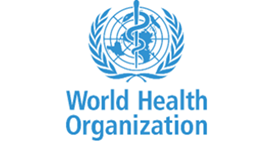UNODC EWA: Benzodiazepine-type and opioid NPS feature as major concern in toxicology cases
VIENNA, Austria – October 2022: The UNODC Current NPS Threats Vol. V presents recent analysis from the UNODC Early Warning Advisory (EWA) on NPS by combining data from NPS identified in seized material with toxicology information from clinical, driving under the influence of drugs (DUID), drug facilitating sexual assault (DFSA) and post-mortem (PM) cases. This allows to identify key developments regarding health threats associated with the use of NPS. Polydrug use continues to be an important feature in NPS casework. Over the data collection period for this report, more than 1400 toxicology cases involving 63 individual NPS were reported to UNODC and trends observed in previous Current NPS threats reports have continued.
Benzodiazepine-type NPS continue to constitute the most frequent group that was reported across the three main case types (PM, DUID and clinical admissions – see Figure 1) and were identified in 67 per cent of DUID cases and 47 per cent of PM cases. Of the substances reported, the most common were etizolam (n=141), clonazolam (n=140), flualprazolam (n=107) and flubromazolam (n=89).In addition, bromazolam was reported in 21 cases, flubromazepam reported in 4 cases and each of phenazepam and pyrazolam in one case.
Figure 1: New Psychoactive Substance groups reported across main toxicology case types
Source: Toxicology portal of the UNODC Early Warning Advisory on NPS, 2022.
Note: Sedatives/hypnotics are all benzodiazepine-type NPS. Data displayed in the graph are from the period May 2021-April 2022.
Synthetic opioids such as fentanyl analogues and nitazenes represent the second most frequent group identified. They outnumber synthetic cannabinoid receptor agonists in terms of number of substances in toxicology cases reported to the UNODC Early Warning Advisory. Orthofluorofentanyl and methoxyacetylfentanyl (both under international control since 2019) accounted for 65 percent of all reports. There were also first-time reports of nitazenes such as metonitazene (placed under international control in May 2022) which was reported in 5 PM cases and 1 DUID case.
Figure 2: Top 5 NPS with opioid effects reported across PM and DUID cases
Source: Toxicology portal of the UNODC Early Warning Advisory on NPS, 2022.
Note: All substances are placed under international control. Data displayed in the graph are from the period May 2021-April 2022.
Of particular concern is the continued presence of carfentanil (placed under international control in 2018) which was reported in 11 PM and 15 DUID cases in North America. The pharmacological nature of carfentanil presents a significant risk of toxicity. This also extends to the cases involving other synthetic opioids, where despite other drugs being present (especially fentanyl, heroin/morphine, methamphetamine, cocaine and benzodiazepines), the detected synthetic opioids seem to have caused or contributed to the death or driving intoxication.
For further information please see:
UNODC, Current NPS Threats Volume V (October 2022).
UNODC EWA newsclip: November 2021 – UNODC EWA: Synthetic opioids increase and diversify rapidly




